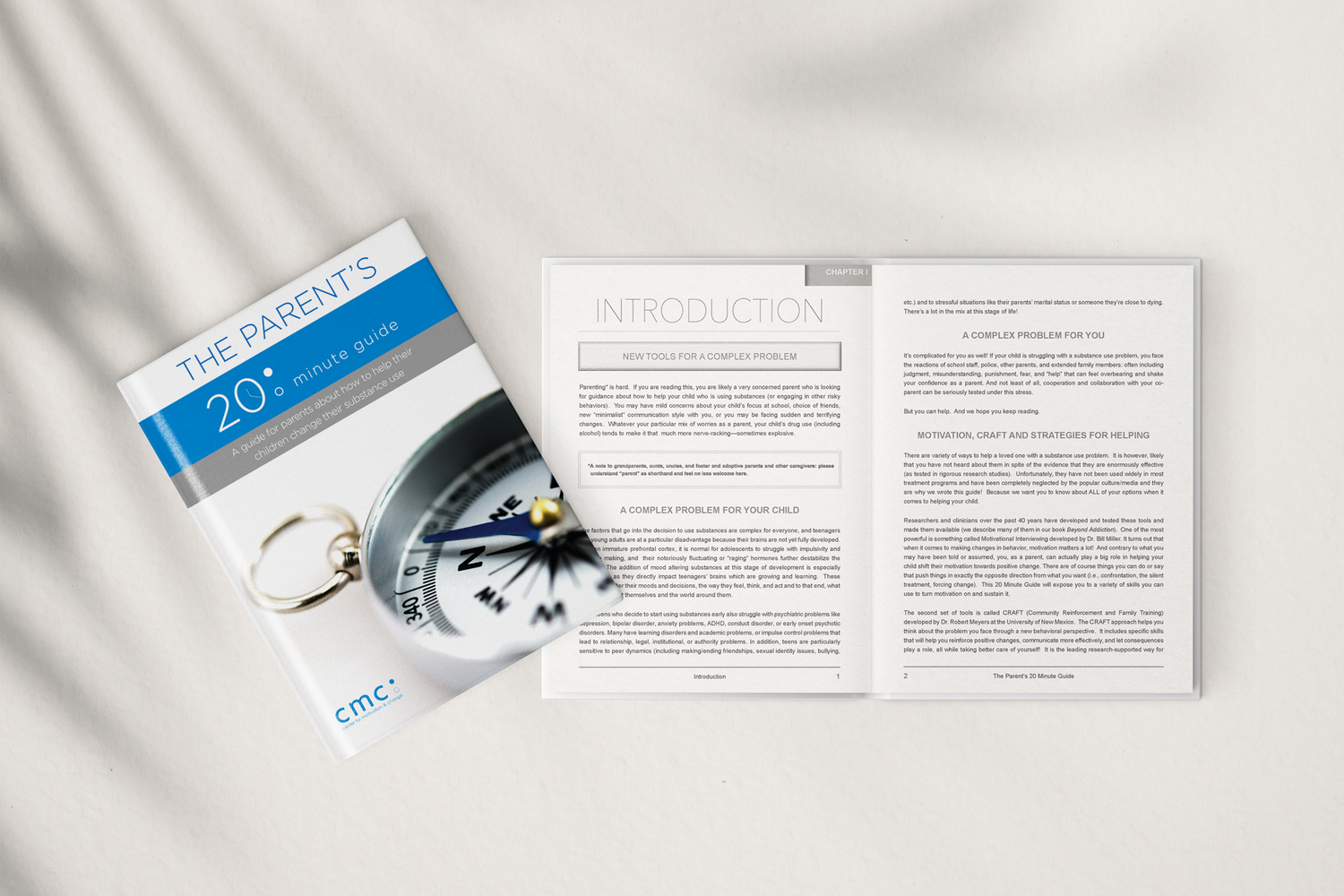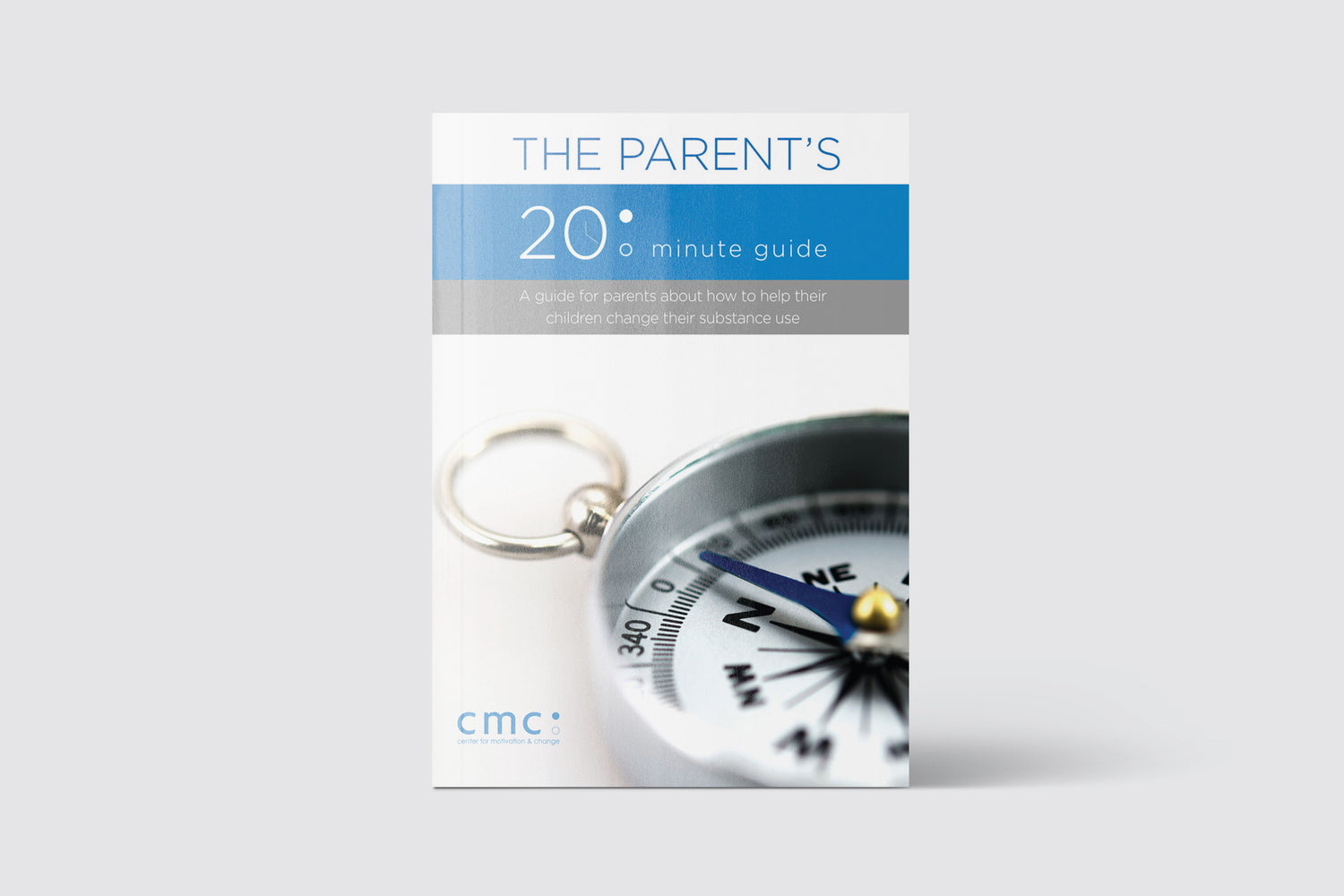Introduction to the Parent’s Guide
Parenting is hard. If you are reading this, you are likely a very concerned parent who is looking for guidance about how to help your child who is using substances (or engaging in other risky behaviors). You may have mild concerns about your child’s focus at school, choice of friends, new “minimalist” communication style with you, or you may be facing sudden and terrifying changes. Whatever your particular mix of worries as a parent, your child’s drug use (including alcohol) tends to make it that much more nerve-racking—sometimes explosive.
We want this workbook to be a place of calm in stormy seas: something you can return to, whenever you need it, for insight, guidance, and hope. Ultimately, we hope it will help you create an environment that is supportive of change—for you and your loved one alike.
Collapsible content
A Complex Problem for Your Child
The factors that go into the decision to use substances are complex for everyone, and teenagers and young adults are at a particular disadvantage because their brains are not yet fully developed. With an immature prefrontal cortex, it is normal for adolescents to struggle with impulsivity and decision making, and their notoriously fluctuating or “raging” hormones further destabilize the situation. The addition of mood altering substances at this stage of development is especially problematic as they directly impact teenagers’ brains which are growing and learning. These substances alter their moods and decisions, the way they feel, think, and act and to that end, what they learn about themselves and the world around them.
Many teens who decide to start using substances early also struggle with psychiatric problems like depression, bipolar disorder, anxiety problems, ADHD, conduct disorder, or early onset psychotic disorders. Many have learning disorders and academic problems, or impulse control problems that lead to relationship, legal, institutional, or authority problems. In addition, teens are particularly sensitive to peer dynamics (including making/ending friendships, sexual identity issues, bullying, etc.) and to stressful situations like their parents’ marital status or someone they’re close to dying. There’s a lot in the mix at this stage of life!
A Complex Problem For You
It’s complicated for you as well! If your child is struggling with a substance use problem, you face the reactions of school staff, police, other parents, and extended family members: often including judgment, misunderstanding, punishment, fear, and “help” that can feel overbearing and shake your confidence as a parent. And not least of all, cooperation and collaboration with your co- parent can be seriously tested under this stress.
But you can help. And we hope you keep reading.
Motivation, CRAFT, and Strategies for Helping
There are variety of ways to help a loved one with a substance use problem. It is however, likely that you have not heard about them in spite of the evidence that they are enormously effective (as tested in rigorous research studies). Unfortunately, they have not been used widely in most treatment programs and have been completely neglected by the popular culture/media and they are why we wrote this guide! Because we want you to know about ALL of your options when it comes to helping your child.
Researchers and clinicians over the past 40 years have developed and tested these tools and made them available (we describe many of them in our book Beyond Addiction). One of the most powerful is something called Motivational Interviewing developed by Dr. Bill Miller. It turns out that when it comes to making changes in behavior, motivation matters a lot! And contrary to what you may have been told or assumed, you, as a parent, can actually play a big role in helping your child shift their motivation towards positive change. There are of course things you can do or say that push things in exactly the opposite direction from what you want (i.e., confrontation, the silent treatment, forcing change). This 20 Minute Guide will expose you to a variety of skills you can use to turn motivation on and sustain it.
The second set of tools is called CRAFT (Community Reinforcement and Family Training) developed by Dr. Robert Meyers at the University of New Mexico. The CRAFT approach helps you think about the problem you face through a new behavioral perspective. It includes specific skills that will help you reinforce positive changes, communicate more effectively, and let consequences play a role, all while taking better care of yourself! It is the leading research-supported way for families to help their substance using loved ones. Compared to families trained to do interventions or who attend Al-Anon, family members who are trained in CRAFT are more likely to see their loved one’s willingness to get help increase and substance use decrease or stop all together. In CRAFT, the concerned family member (that’s you!) also feels better.
How to Use this Guide
Unlike other approaches, CRAFT teaches you how to stay involved in a positive, ongoing way, while also taking care of yourself. This guide will help you with such tools as:
- How to react when your child has been using substances and when he has NOT been using substances
- How to co-parent and collaborate as effectively and smoothly as possible
- Getting more of what you want to see from your child and less of what you don’t
- How to talk to your child so that you are more likely to be heard
- How to take care of yourself all along the way
For each topic, we explain why it’s important and how to use it to encourage change. We provide worksheets with examples to show you how CRAFT strategies look in action. We encourage you to use these worksheets to practice the skills as many times as you want or need. Feel free to skip around—it’s not necessary to go through the topics in order, but it is important to practice each one.

The Parent's Guide: Print Edition
Purchase a print edition here if you prefer to have a hard copy.

The Parent's Guide: Digital Edition
Purchase a digital edition here if you prefer to view on your device.






